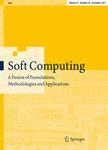版权所有:内蒙古大学图书馆 技术提供:维普资讯• 智图
内蒙古自治区呼和浩特市赛罕区大学西街235号 邮编: 010021

作者机构:Raghu Inst Technol Dept CSE Visakhapatnam Andhra Pradesh India Gitam Univ Gitam Inst Technol Dept CSE Visakhapatnam Andhra Pradesh India Andhra Univ Coll Engn Autonomous Dept CS&SE Visakhapatnam Andhra Pradesh India
出 版 物:《SOFT COMPUTING》 (Soft Comput.)
年 卷 期:2016年第20卷第3期
页 面:1179-1189页
核心收录:
学科分类:08[工学] 0812[工学-计算机科学与技术(可授工学、理学学位)]
主 题:Machine learning algorithms Rough data sets Medical diagnose Thyroid disease expert advisory system Hybrid architecture Optimistic disease
摘 要:This work is a hybrid architecture design furnished successfully using artificial intelligence techniques, rough data sets theory and machine learning algorithms. The purpose of this work is to bring the spotless and smart approach in identifying the thyroid disease in a human. There are several mechanisms implemented on thyroid data sets which produced astonished outcomes, but the data considered for the thyroid disease diagnoses (TDD) is inconsistent, redundant and consists of missing attribute values as per my literature survey. The proposed work is to construct an expert advisory system of hybrid architecture, which is to determine the optimistic disease growth because of the thyroid gland. A string matching system (SMS) was at the outset developed, which can predict the actual TDD based on the knowledge available. If the SMS fails, an individual approaches using artificial bee colony optimization and particle swarm optimization are developed to achieve the accuracy of results appreciating the measure values as 65 and 93 %, but the results obtained using the above said approaches are calculated using some missed attribute values which are not included in the knowledge likewise left blank and hence the proposed work continues to first generate the missing attribute value in the knowledge by using rough data sets theory and the obtained data (missed attribute values) is given to predict optimistic disease along with its prevention and its curing methods. However, the data generated cannot predict the optimal disease and hence it is proposed to use a machine learning algorithm so that, obtained result is hygienic. The knowledge for implementation of this work is gathered from Intelligent System Laboratory of K. N. Toosi University of Technology, ImamKhomeini Hospital. Aquestionnaire form is developed for providing an interface for user so they can contribute the data.